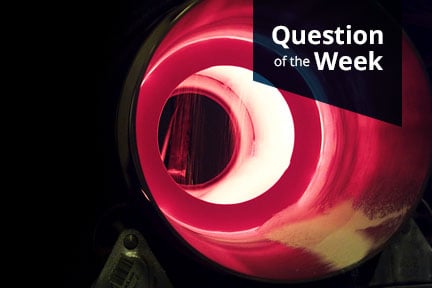Rotary kilns use extremely high temperatures combined with controlled retention times to cause a chemical reaction or phase change in a material.
At certain temperatures (different per each material), a material will undergo a chemical reaction or phase change. This is often necessary to bring about certain qualities of a material, or to cause components of the material to oxidize, leaving only the valuable component.
Rotary kilns can be either direct-fired, or indirect-fired (calciners). Direct-fired kilns use direct contact between the material and the process gas to cause the reaction, whereas indirect kilns rely on the heat emanating from the shell of the drum, which is externally heated to temperature.
In the case of a direct-fired kiln, a refractory lining protects the shell of the kiln from the high temperatures within, and the system can be designed to be either parallel or counter-current in flow.
For more information, see our rotary kiln webpage.



